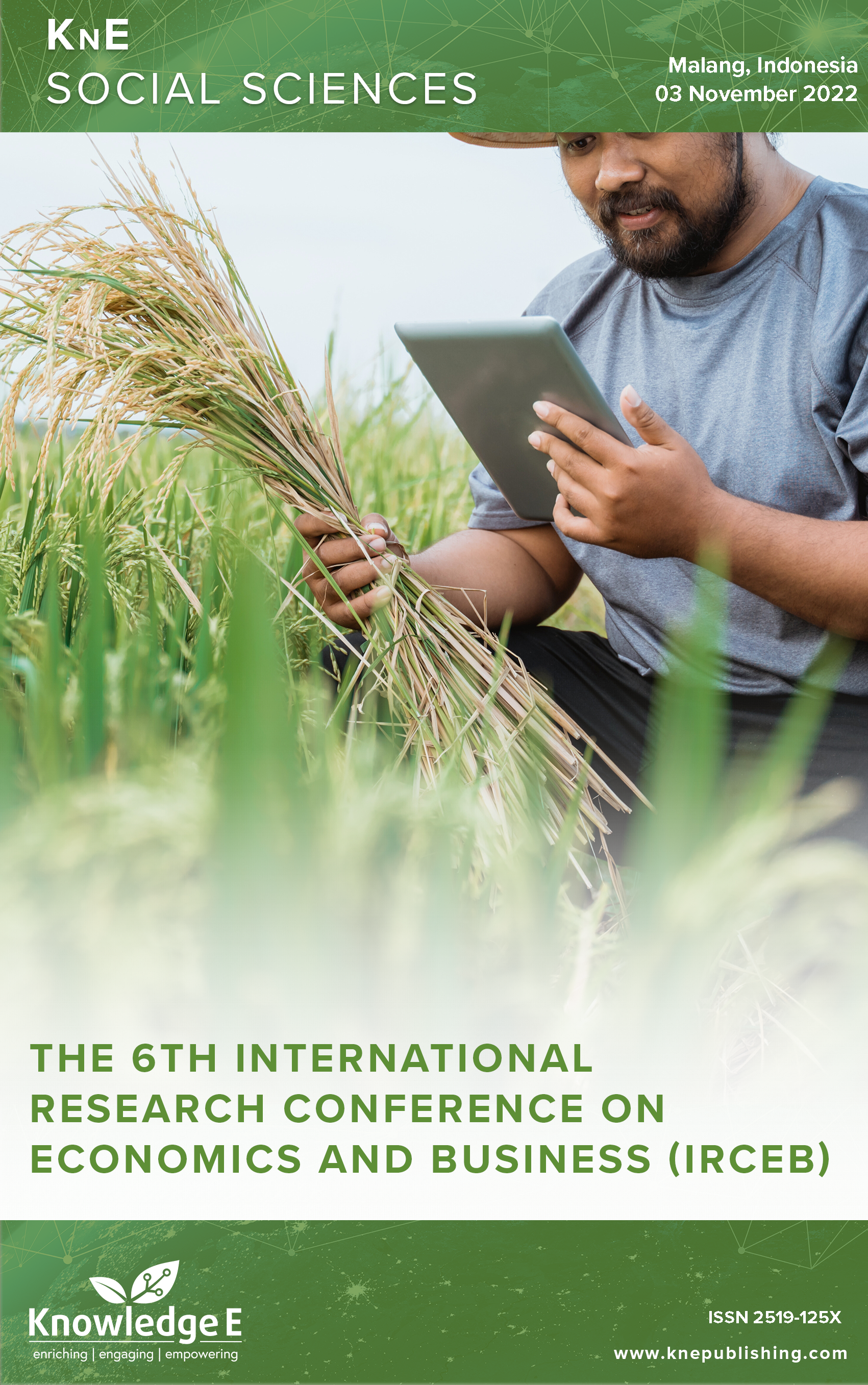Virtual Reality Research in Office Management: A Bibliometric Analysis
DOI:
https://doi.org/10.18502/kss.v9i4.15085Abstract
Office digitization not only occurs in the aspect of using digital tools to facilitate the work of employees and office managers but also transfers all office activities to a virtual environment. This also invites the pros and cons. This study aims to provide an extensive bibliometric literature study on “virtual reality in office management”. The research articles were compiled from the Google Scholar database and the publishers Elsevier and Emerald. Of the 38 articles found in the database, from 2011 to 2021, 35 articles were analyzed in this study. The selected references were then managed using reference manager software, namely Zotero. After managing the database, the researcher performed classification and visualization using VOS viewer software. Overall, this literature study provides an appropriate reference point for further research on “virtual reality in office management.”
Keywords: bibliometric analysis, future office, office management, virtual reality
References
Helms MM, Raiszadeh FM. Virtual offices: understanding and managing what you cannot see. Work Study. 2002 Jan;51(5):240–247. DOI: https://doi.org/10.1108/00438020210437259
Alashhab ZR, Anbar M, Singh MM, Leau YB, Al-Sai ZA, Abu Alhayja’a S. Impact of coronavirus pandemic crisis on technologies and cloud computing applications. J Electron Sci Technol. 2021 Mar;19(1):100059. DOI: https://doi.org/10.1016/j.jnlest.2020.100059
Fereydooni N, Walker BN. ‘Virtual reality as a remote workspace platform: Opportunities and challenges’, Microsoft Res., Aug. 2020, Accessed: Dec. 28, 2021. [Online]. Available: https://www.microsoft.com/en-us/research/publication/virtual-reality-as-aremote- workspace-platform-opportunities-and-challenges/
Kirschner PA, De Bruyckere P. The myths of the digital native and the multitasker. Teach Teach Educ. 2017 Oct;67:135–142. DOI: https://doi.org/10.1016/j.tate.2017.06.001
Carter M, Egliston B. ‘A critical future of virtual reality: All work and no play’. AoIR Sel Pap Internet Res. 2021;(Sep): https://doi.org/10.5210/spir.v2021i0.12152 DOI: https://doi.org/10.5210/spir.v2021i0.12152
Radianti J, Majchrzak TA, Fromm J, Wohlgenannt I. A systematic review of immersive virtual reality applications for higher education: Design elements, lessons learned, and research agenda. Comput Educ. 2020 Apr;147:103778. DOI: https://doi.org/10.1016/j.compedu.2019.103778
Merchant Z, Goetz ET, Cifuentes L, Keeney-Kennicutt W, Davis TJ. ‘Effectiveness of virtual reality-based instruction on students’ learning outcomes in K-12 and higher education: A meta-analysis’. Comput Educ. 2014 Jan;70:29–40. DOI: https://doi.org/10.1016/j.compedu.2013.07.033
Garrett LE, Spreitzer GM, Bacevice PA. Co-constructing a sense of community at work: The emergence of community in coworking spaces. Organ Stud. 2017 Jun;38(6):821–842. DOI: https://doi.org/10.1177/0170840616685354
Joshi S, Hamilton M, Warren R, Faucett D, Tian W, Wang Y, et al. Implementing virtual reality technology for safety training in the precast/ prestressed concrete industry. Appl Ergon. 2021 Jan;90:103286. DOI: https://doi.org/10.1016/j.apergo.2020.103286
Rubio EM, Sanz A, Sebastián MA. Virtual reality applications for the next-generation manufacturing. Int J Comput Integrated Manuf. 2005 Oct;18(7):601–609. DOI: https://doi.org/10.1080/09511920500069259
Michalos G, Karvouniari A, Dimitropoulos N, Togias T, Makris S. Workplace analysis and design using virtual reality techniques. CIRP Ann. 2018 Jan;67(1):141–144. DOI: https://doi.org/10.1016/j.cirp.2018.04.120
Garrett B, Taverner T, Gromala D, Tao G, Cordingley E, Sun C. Virtual reality clinical research: Promises and challenges. JMIR Serious Games. 2018 Oct;6(4):e10839. DOI: https://doi.org/10.2196/10839
Shaikh IA, Colarelli O’Connor G. Understanding the motivations of technology managers in radical innovation decisions in the mature R&D firm context: an Agency theory perspective. J Eng Technol Manage. 2020 Jan;55:101553. DOI: https://doi.org/10.1016/j.jengtecman.2020.101553
Garza-Reyes JA. Lean and green – a systematic review of the state of the art literature. J Clean Prod. 2015 Sep;102:18–29. DOI: https://doi.org/10.1016/j.jclepro.2015.04.064
Tranfield D, Denyer D, Smart P. Towards a methodology for developing evidenceinformed management knowledge by means of systematic review. Br J Manage. 2003 Sep;14(3):207–222. DOI: https://doi.org/10.1111/1467-8551.00375
Setyaningsih I, Indarti N, Jie F. Bibliometric analysis of the term “green manufacturing”. Int J Manag Concepts Philos. 2018;11(3):315. DOI: https://doi.org/10.1504/IJMCP.2018.093500
Anand A, Tripathi R, Karumathil A, Kalra T, ‘Applying systematic bibliometric methods to track a journal’s impact and review its knowledge contribution’. Glob Knowl Mem Commun. vol. ahead-of-print, no. ahead-of-print, Jan. 2021, https://doi.org/10.1108/GKMC-04-2021-0064 DOI: https://doi.org/10.1108/GKMC-04-2021-0064
van Eck NJ, Waltman L. Software survey: VOSviewer, a computer program for bibliometric mapping. Scientometrics. 2010 Aug;84(2):523–38. DOI: https://doi.org/10.1007/s11192-009-0146-3
Hudha MN, Hamidah I, Permanasari A, Abdullah AG, Rachman I, Matsumoto T. Low carbon education: A review and bibliometric analysis. Eur J Educ Res. 2020;9(1):319– 329. DOI: https://doi.org/10.12973/eu-jer.9.1.319
Szomszor M, Adams J, Fry R, Gebert C, Pendlebury DA, Potter RW, et al. Interpreting bibliometric data. Front Res Metr Anal. 2021 Feb;5:628703. DOI: https://doi.org/10.3389/frma.2020.628703
Ellegaard O, Wallin JA. The bibliometric analysis of scholarly production: How great is the impact? Scientometrics. 2015;105(3):1809–1831. DOI: https://doi.org/10.1007/s11192-015-1645-z
van Eck NJ, Waltman L. ‘Visualizing Bibliometric Networks’, in Measuring Scholarly
Chen G, Xiao L. Selecting publication keywords for domain analysis in bibliometrics: A comparison of three methods. J Informetrics. 2016 Feb;10(1):212–223. DOI: https://doi.org/10.1016/j.joi.2016.01.006
Giusino D, Bowman N, Toscano F. Work from home (WFH) during COVID-19: Is virtual reality (VR) a new solution to new problems? J Occup Environ Med. 2021 Oct;63(10):e755–e756. DOI: https://doi.org/10.1097/JOM.0000000000002339
Moglia M, Hopkins J, Bardoel A. Telework, hybrid work and the United Nation’s sustainable development goals: Towards policy coherence. Sustainability (Basel). 2021 Jan;13(16):16. DOI: https://doi.org/10.3390/su13169222
Juan YK, Chi HY, Chen HH. Virtual reality-based decision support model for interior design and decoration of an office building. Eng Construct Architect Manag. 2019 Jan;28(1):229–245. DOI: https://doi.org/10.1108/ECAM-03-2019-0138
Szczepanska A, Kazmierczak R, Myszkowska M. Virtual reality as a tool for public consultations in spatial planning and management. Energies. 2021 Jan;14(19):19. DOI: https://doi.org/10.3390/en14196046
Saetta S, Tiacci L, Cagnazzo L. The innovative model of the virtual development office for collaborative networked enterprises: The GPT network case study. Int J Comput Integrated Manuf. 2013 Jan;26(1–2):41–54. DOI: https://doi.org/10.1080/0951192X.2012.681909
Dwivedi YK, Hughes L, Kar AK, Baabdullah AM, Grover P, Abbas R, et al. Climate change and COP26: are digital technologies and information management part of the problem or the solution? An editorial reflection and call to action. Int J Inf Manage. 2022 Apr;63:102456. DOI: https://doi.org/10.1016/j.ijinfomgt.2021.102456

